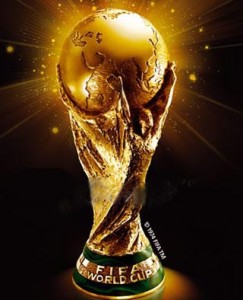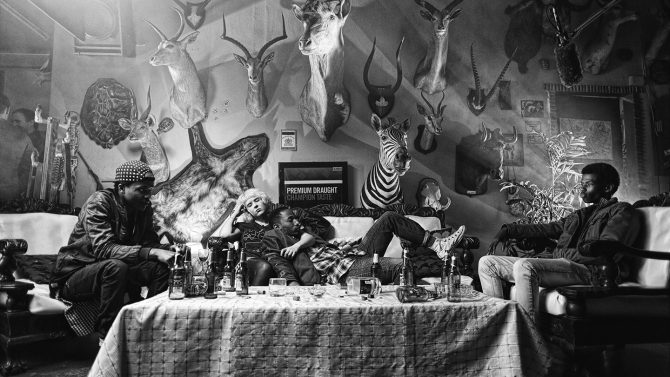It may seem odd that I am writing a blog about South Africa, since I have never been in the continent. But I have been reading a lot of blogs from South Africa because of the world cup, and I have encountered many South Africans and people who have been to the country many times in my life.
The fact is that I feel the need to express my interest and concerns about this country, rich in natural resources and scarred from a terrible history.

I must have been something like 12 or so when I first read all about apartheid, Dutch colonialism, and Mandela´s leadership on a huge book we had at home which was called a Guide to the Third World. In many ways, this book helped shape my political opinions for the future, as it told the stories of the countries that had lost the wars, the ones that lived in poverty and under foreign domination, if not political, largely economical.
My country had recently come out of a terrible dictatorship, and this was the sort of book that you had to bury in your backyard in those times, unless you wanted to end up tortured (by the military police) in a dungeon somewhere, where your family and friends could never find you.
So, what does this all have to do with South Africa today? Well, first let me tell you about two South African people I met while working on a cruise ship in Europe. One of them was a boy, probably 11 years old. He was white, of Dutch descent, and his family belonged to the privileged classes in Johannesburg or another central South African city. I am always curious to hear the political opinions of children, because they sometimes repeat what their parents say at home, with no care or desire to be “politically correct.”
This kid told me, just out of the blue, and without me asking him anything, “The problem with the black people is that we made them angry with apartheid, and that was a mistake, ´cause now they are angry at us;” he then went on to describe how they had to live in an exclusive “all-white” area and it was dangerous to venture into “black country.”
This comment gave me a very interesting insight to what certain former supporters of apartheid might be thinking these days, namely, that apartheid was not bad because it violated human rights, etc, etc, but only because “it made black people too angry, and now they cause us trouble.”
The other South African I met is a charming and smart cruise staff called Hannah. Hannah was great, everyone loved her. She was a very warm human being. One day during our usual dinner at the staff mess, where interesting conversation was a must, since the food was never something to write home about, Hannah started talking about post-apartheid South Africa. She implied that black people controlled the justice system there now, and that she was afraid of being blamed for random non-existent crimes against black people, because now “whites were always to blame” for everything. She said that you couldn´t defend yourself if a black person attacked you, because you would always be considered guilty.
I had a long argument with her, saying that I couldn´t believe that could be possible in such a hard-won democracy. I honestly thought she was exaggerating, and I couldn´t believe such a humble, nice, and warm person as her could be under such a naif delusion.
Let´s move on to fact number THREE. Ana, one of my best friends once travelled to South Africa. She is a beautiful Brazilian girl with dark hair. Ana told me that when she was in South Africa she was considered “colored,” which means that she was neither white nor black. She said that neither black nor white men would look at her or find her attractive for this reason.
Later on, I was hired by WISEGEEK to write an article about The proponents of apartheid in South Africa, and I learnt where the color distinctions came from. Basically, apartheid had been designed and engineered to the very utmost detail by Dutch-origin thinkers and philosophers. The master plan included these very precise color distinctions and classifications.
Now, many years have passed. Mandela is free, the president is black, and yet, I just read a blog by a Uruguayan journalist who, after taking one of those packed flights to Johannesburg, chose to drive instead of fly from one world cup match-hosting city to the next. What he found was that the cities were modern and beautiful, and only white people and the black people who worked for them could be seen there. Then, there was the countryside, and then what he called the outskirts of the cities, though he also mentioned that these were separated by a large strip of countryside from the fashionable towns. The outskirts were long spreads of tin huts, where the black people lived in utter poverty.
My afterthought for this world cup, where my local team came back to life, and glory after forty years, and our boy FORLAN was crowned as the top soccer player in the world, is that when the vuvuzelas are long silenced and the tourists are long gone, this new and silent economical white supremacy will resume its normal course, and not much will have changed. Apartheid or not, it seems that not that much has changed in beautiful South Africa, a country that was once one with Uruguay in an ancient geological era, since the times when we were all raising our voices for Mandela to be released from prison.
Thus, it is not without a bitter taste that I watch the eyes of the world leave the reality of South Africa behind, dismissing it as yesterday´s news.

